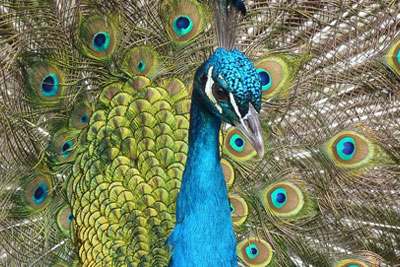What Nanostructures Mean for Colors
Scientists studying blue tarantulas found the spiders’ color was the result of their hairs. These, they discovered, were made up of multiple layers and resembled the structures of flowers. Using computer analyses, the researchers began noting how the hairs reflected light and attempted to copy them with the help of a specialized 3D printer that could create micro and nano pieces. They successfully created a structure like the hairs that had a viewing angle 160 degrees, meaning that when viewed at any of those angles; it would appear to be the same color. That’s the largest man-made viewing angle ever created so far.
But what does this mean for us? Well, these nanostructures are not only brighter and stronger than other natural colors, but they are also non-toxic, unlike pigments. Additionally, scientists on the team believe that in the near-future these could play a big role in the textile industry. Other fields might be slower to adopt these nanostructures, but not because of a lack of possible applications. Currently, there are not many 3D printers capable of making them. Until these become more widespread, using the nanostructures might prove difficult. The scientists, however, are confident that this problem will soon be fixed.
If you’re a researcher studying similar nanostructures, or just trying to create a consistent color, turn to the experts and ensure your colors are what you need them to be. You’re sure to find the perfect color measurement instrument in Konica Minolta Sensing’s extensive catalog. For example, the CM-M6 is easy to use and can evaluate color at a number of viewing angles. Make sure you’re ready to measure nanostructure colors with Konica Minolta Sensing.











